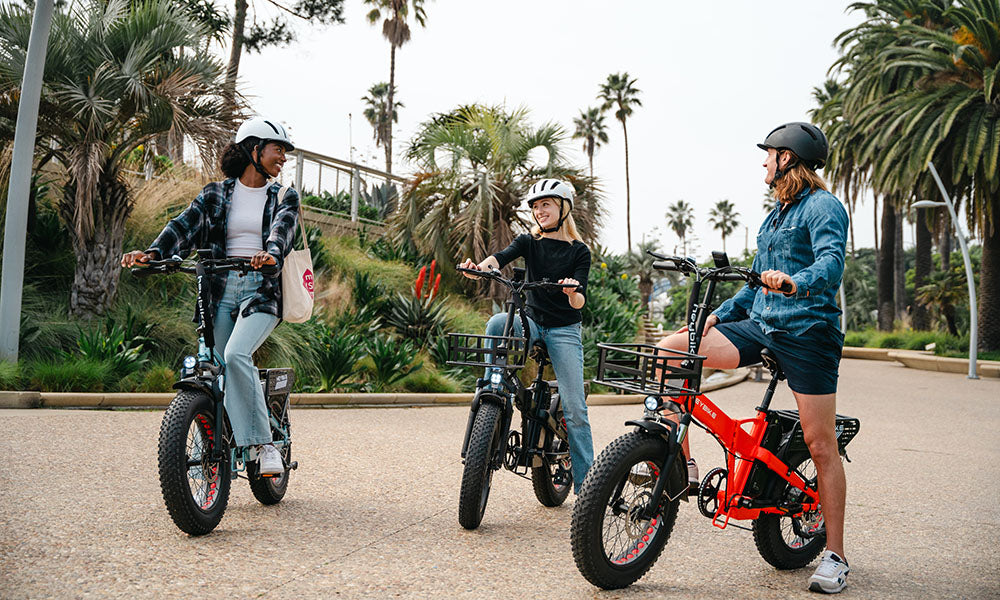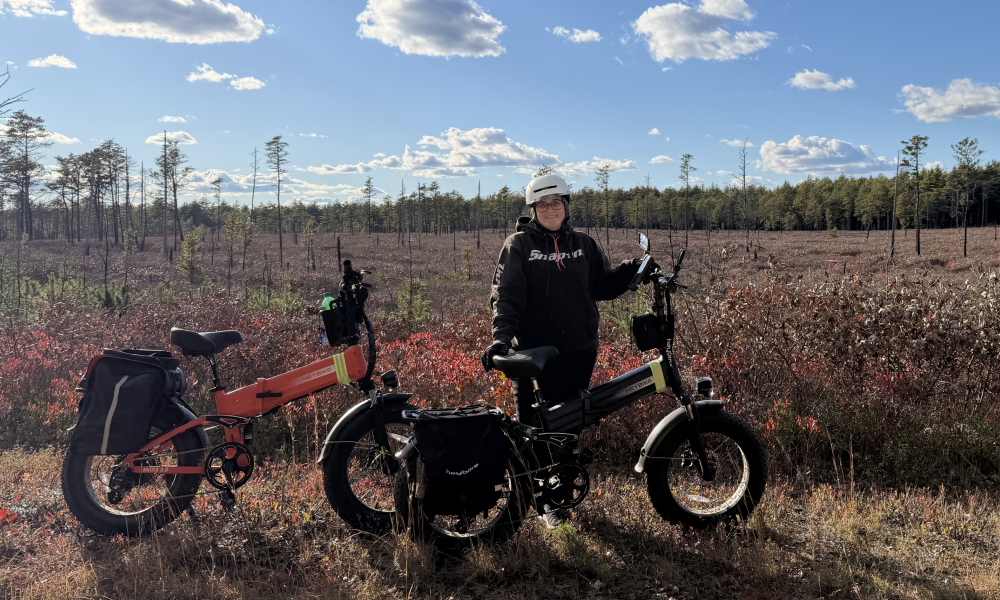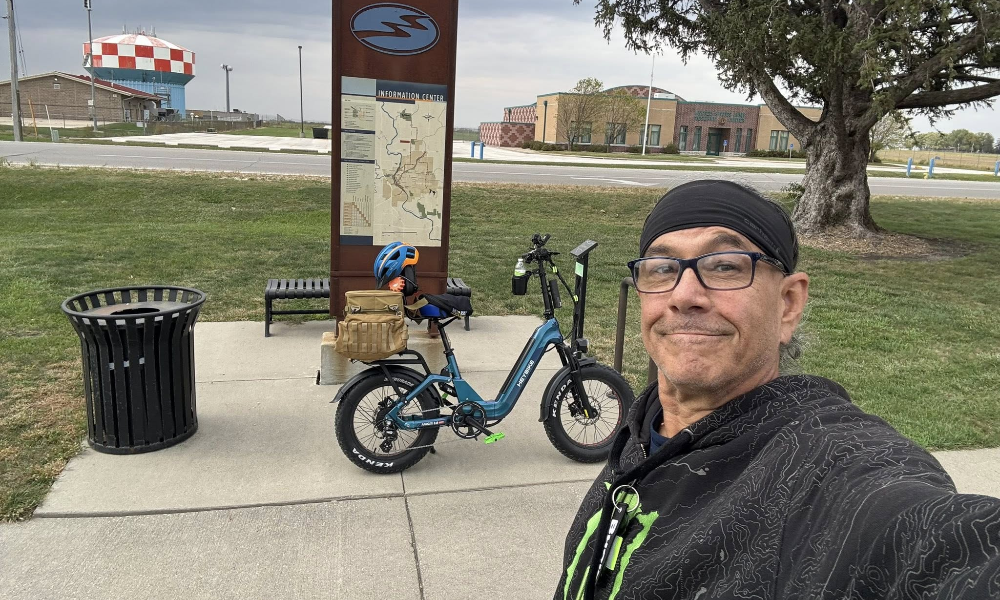With the cozy weather in spring, it's the perfect time to get on your bicycle and hit the road. How do you dress for outdoor spring cycling? Finding the right biking outfits and cycling gear can make all the difference in ensuring a comfortable, enjoyable, and safe ride. This blog serves as a comprehensive guide to teach you how to dress for cycling in spring, equipping you with the knowledge to choose the perfect cycling gear for your rides. From base layers to overshoes, all is covered to optimize your comfort and performance on the bike. Whether you are a seasoned cyclist or just starting on your biking journey, understanding the ins and outs of proper cycling attire will enhance your experience and make your rides more enjoyable.

Versatile Base Layer
The base layer is the foundation of your biking outfit and acts as a moisture-wicking and temperature-regulating layer against your skin. To choose the right base layer for spring cycling, you can opt for materials that are breathable, such as merino wool or synthetic fabrics. These materials help to pull sweat away from your body, keeping you dry and comfortable throughout your ride. For cooler spring days, a long-sleeved base layer provides an extra layer of insulation, while short-sleeved or sleeveless options are ideal for warmer temperatures.
Cycling Gilet
A cycling gilet, also known as a vest, is a versatile piece of clothing that provides both protection and flexibility in changing weather conditions. During spring rides, temperatures can fluctuate, and a cycling gilet becomes a valuable addition to your outfit. Made from lightweight and wind-resistant materials, it acts as a barrier against chilly winds while allowing your body to breathe and regulate temperature. It is an ideal cycling gear for transitional spring days when the temperature rises or when you need extra protection during descents. Additionally, you can consider gilets with reflective elements for enhanced visibility during low-light conditions or nighttime rides.
Rain Jacket
When it comes to spring cycling, unpredictable weather conditions are inevitable. A good rain jacket not only keeps you dry during unexpected showers but also serves as a windbreaker on chilly days. Look for a jacket that is lightweight and breathable, allowing moisture to escape while keeping rain out. A rain jacket with a high collar and a hood provides more protection for your neck and head. Besides, rain jackets are generally versatile enough to accommodate various weather conditions. On cold days, you can layer it over a thermal cycling jersey or a base layer. On mild spring days, you can wear it as an independent outer layer.
Lightweight Full-finger Cycling Gloves
Full-finger cycling gloves offer superior grip, allowing you to maintain control of your bike, especially in wet or sweaty conditions. The gloves provide a layer of protection against blisters, calluses, and road vibrations. The padding on the palms helps to absorb shocks, reducing hand fatigue on longer rides. What's more, the lightweight and breathable materials used in the gloves allow for proper ventilation and help regulate the hand temperature, keeping you comfortable throughout your journey.
Neck Warmer
The neck warmer, a small but important cycling gear, is often overlooked. During chilly spring mornings, the neck warmer acts as a barrier against the cold air, preventing heat loss and keeping your neck comfortable. It also offers added protection against dust, pollen, and other irritants that may be present in the air. Don't underestimate the importance of a neck warmer when dressing for spring cycling. Its ability to regulate temperature, protect against the elements, and provide comfort makes it a valuable addition to your biking outfit.
Knee and Arm Warmers
Knee and arm warmers offer protection against wind, UV rays, and rain showers, shielding your skin from the elements. The stretchy and breathable materials used in their construction provide a comfortable fit without restricting your movement. Knee and arm warmers are designed to be easily worn and removed during your ride. They can be rolled up and stored in your jersey pockets when not needed, making them convenient and space-efficient. Their versatility allows you to customize your outfit, adapting to different weather conditions without the need for multiple clothing layers.
Lightweight Long-sleeved Jersey
Including a lightweight long-sleeved jersey in your spring cycling gear is a wise choice. A jersey is typically made from breathable fabrics that wick moisture away from your skin, allowing for efficient evaporation and preventing overheating. This feature is especially important during intense rides or when tackling challenging terrains. Spring sunshine can be deceptive, and it's important to shield your skin from harmful UV rays. A long-sleeved jersey provides additional coverage for your arms, minimizing sunburn and reducing the risk of long-term sun damage. You can buy jerseys with built-in UPF (Ultraviolet Protection Factor) for enhanced sun protection.
Shorts or Bib Shorts
Shorts or bib shorts are suitable for spring cycling because they ensure flexible movements of your legs during riding. Constructed from breathable fabrics, they keep you comfortable during long rides. Their ergonomic design and padding prevent chafing and saddle sores. During spring, when temperatures can be temperate or fluctuating, shorts or bib shorts strike the perfect balance between coverage and breathability. You can also pair them with knee or leg warmers for added warmth on cooler days, or wear them alone when the weather permits.
Cycling Overshoes
Spring can bring rain showers and chilly temperatures. Cycling overshoes are typically made from waterproof materials that keep your feet dry when riding on wet roads or encountering light rain. They provide an additional layer of insulation, preserving warmth and preventing cold wind from chilling your feet. Many cycling overshoes feature reflective elements or bright colors, enhancing your visibility to motorists and other cyclists. This improves safety, especially during low-light conditions or when riding in traffic. By making your feet more noticeable, overshoes contribute to a safer and more confident riding experience.
Summary
All 9 cycling gears are mentioned in this blog. With them, how to dress for cycling is no longer a problem. Each gear helps to bring you a better and more comfortable riding experience. Equip yourself with the right biking outfit and dress for success on your spring cycling adventures!



Share:
Electric Bikes for Every Women: Ultimate Buying Guide
Top 6 Places for Spring Road Biking in the US